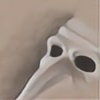HOME | DD
 Sanrou — Enodocrura reproduction
Sanrou — Enodocrura reproduction

#alien #anu #evolution #exobiology #extraterrestrial #scifi #speculative #xenobiology
Published: 2018-03-09 23:16:00 +0000 UTC; Views: 14715; Favourites: 200; Downloads: 0
Redirect to original
Description
ATTENTION: the descriptions used in this chart are merely representatives of function. The names used (uterus, gametes, spermatozoa, nymph, etc.) were used due to the biological similarities to mechanisms known on terran life.
Enodocrura :
1. The frontal opening from which the genitals of the Enodocrura get exposed in the sexual act, and from where the nymphs are born.
2. A muscular barrier between the internal and external tissues.
3. The genetic material in the reproduction of the Enodocrura is divided in two parts: the (+) gamete, who carries 1/3 of the genetic material of the offspring and stays inside its body to be fecundated; and the (++) gamete, who carries 2/3 and leaves the body to fecundate another individual. In a game of strength, the individual more capable in the sexual act penetrates the more “passive” one, transferring most of the genetic material. The gamete (+) is fecundated in the “uterus” where it becomes a zygote (+++) that later transforms into an egg and then a nymph.
4. The penis of the Enodocrura is the structure that transfers the gamete (++) to its mating partner. To that function, it’s a strong and mobile organ that also is responsible by moving the newborn nymphs from its uterus to outside the body.
5. Organ that produces and stores the gamete (++).
6. Tissue responsible for producing the protein serum that will be fed to the newborn nymphs.
7. Protein serum sack.
B. The Enodocruras reproduce through cross-fertilization, similar to some snails: sexual reproduction with no sexual dimorphism. The fertilized egg then becomes a nymph inside the uterus.
C. The young nymphs are placed (with the help of the penis) in the lower parts of its body to feed on a “protein rich serum” that will be the building blocks to the body of the new Enodocrura. The hair filaments in this region are to protect the nymphs from the water of the nocturnal rains .
D. The growth of the Enodocrura’s nymphs are quick: in about 6 days, the nymph reaches maturity becoming a miniature of an adult.
Project: www.deviantart.com/sanrou/gall…
Related content
Comments: 55

Most blandopodas are, in average, this size . This species in particular can grown up to 55cm. The size of the juveniles can vary accordingly to the amount of protein serum they could feed on, but usually don't get bigger than 15cm, growing slower later on while changing "scales"
👍: 2 ⏩: 1

No problem! The fast part is most for the metamorphosis from the nymph to its adult form. From there, to grown up to the average size, is way more slow ^^
👍: 2 ⏩: 0

I've not looked in the gallery as of late, but I could definitely see a few clades adopting a pouch for their progeny to further protection. Loving the life cycle of these aliens though!
👍: 0 ⏩: 1

That's certainly a open path. Thanks, I'm glad you like it
👍: 0 ⏩: 0

Wow!
I really like this one!!
But ... so fast? Only 3 days?
👍: 0 ⏩: 1

Thanks!
Yep. They grow up fast! ^^
👍: 1 ⏩: 0

neat system; though it makes me wonder if any branches of life in their phylum became neotenous.
well-illustrated
👍: 0 ⏩: 1

Thanks!
Probably it has somewhere on the planet
👍: 0 ⏩: 0

it looks like me and Blandopodas have something in common
👍: 0 ⏩: 1

This is such a cool idea!
I love that the nymphs are actually kinda like parasites in a way
👍: 1 ⏩: 1

Thank you!
Pretty much like newborn mammals are
👍: 1 ⏩: 1

You’re most welcome!
Yeah, now that I think about it, you’re actually kinda right
👍: 0 ⏩: 1

That's really well done and informative! I like the nymphs' design in particular.
Wow, they do grow up fast.
👍: 1 ⏩: 1

Indeed they do
And thanks! ^^
👍: 1 ⏩: 0

This is one of the best pieces of xenobiology I've ever seen!
👍: 0 ⏩: 1

Oh, thank you very much! Appreciated
👍: 0 ⏩: 0

Thanks man!
I'll be making more info charts like this from now on
👍: 0 ⏩: 0

Really cool, is fascinating to see their reproductive cycle, good work
👍: 0 ⏩: 1

Seriously though! You are now reaching an entirely new level of detail and fidelity in your project! The worldbuilding is very cool, but the art just blows me away! I think it's a given that I will forever remain supportively envious of your skills ;D
👍: 0 ⏩: 1

Thanks again dude, I try my best!
And I'll be forever grateful my friend, for real
👍: 0 ⏩: 1

Ohhhhh! Awesome stuff! I love this reproductive system!
👍: 1 ⏩: 2

Thank you! I'm glad you like it
👍: 1 ⏩: 0

Very well thought through and put todgeather. Fantastic job!
👍: 0 ⏩: 1

Thank you very much, I guess!
if you are referring to my chart
👍: 0 ⏩: 0

Not really, but they could be classified as hermaphrodites
👍: 1 ⏩: 0

with zigote you mean gametes? seems their lyfe cicle is weird, I guess they are henmaprhoditic
👍: 0 ⏩: 1

Yep, you're right. I had something in mind when drawing this but I guess gametes are a better name for it. Thank you for your input, Im gonna change this week
👍: 0 ⏩: 1

having an exam on life cycles soonish certainly helped me to figure out that
👍: 0 ⏩: 1

hahahahahah, yep.
Good luck on your exam, btw
👍: 0 ⏩: 1

thanks it went more or less well I guess, I think it could have been better
👍: 0 ⏩: 0

That's the intention! I'm glad I could pass that through
👍: 0 ⏩: 0
| Next =>



























